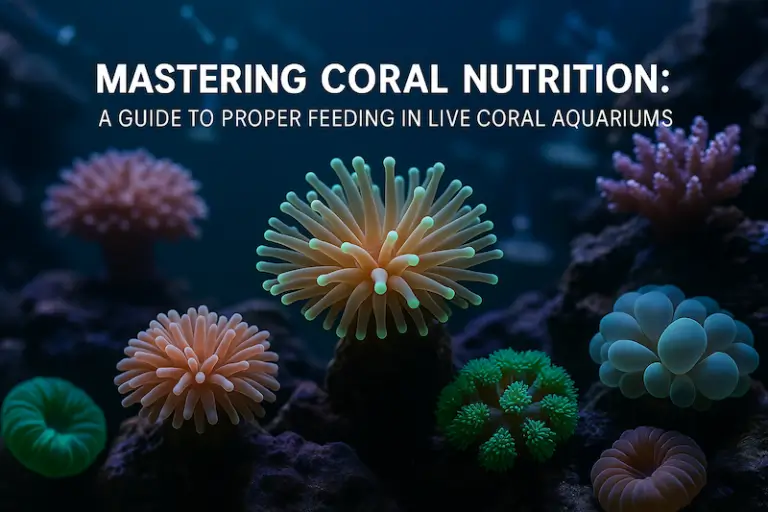In Depth Look At Gorgonian Fans
Gorgonian sea fans are among the most captivating and elegant inhabitants of coral reefs. These graceful giants, known for their intricate, tree-like structures, add both beauty and biodiversity to reef ecosystems. This comprehensive guide explores the care and maintenance of gorgonian sea fans and their vital contribution to reef biodiversity.
What Are Gorgonian Sea Fans?
Gorgonians, commonly referred to as sea fans, belong to the order Alcyonacea within the class Anthozoa. They are soft corals characterised by their flexible, branching structures, which resemble fans or whips. These structures are composed of a protein called gorgonin, which gives them their flexibility and resilience.
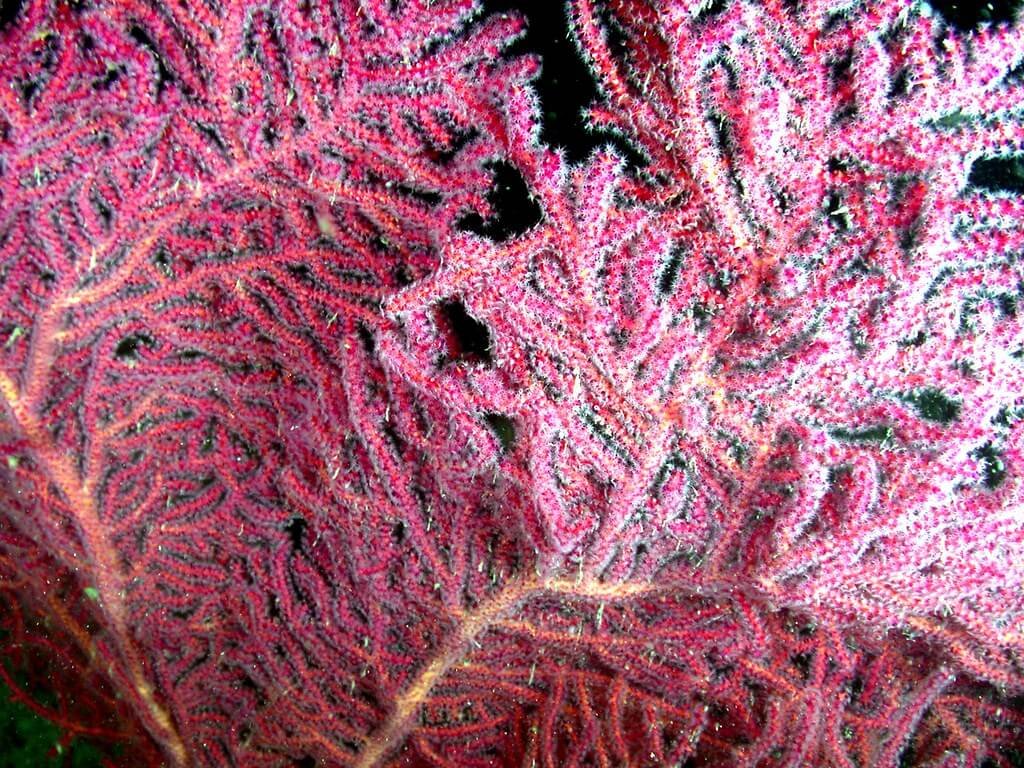
Key Characteristics:
• Appearance: Gorgonians come in a variety of shapes, colours, and sizes. Their branches can be delicate and lace-like or thick and robust.
• Size: They can grow from a few inches to several feet tall, depending on the species and environmental conditions.
• Habitat: Found in shallow to deep waters, gorgonians attach themselves to substrates like rocks, coral, and even sandy bottoms.
Types of Gorgonian Sea Fans
There are numerous species of gorgonian sea fans, each with unique characteristics. Here are some commonly found species in reef aquariums:
1. Purple Sea Fan
(Gorgonia ventalina)
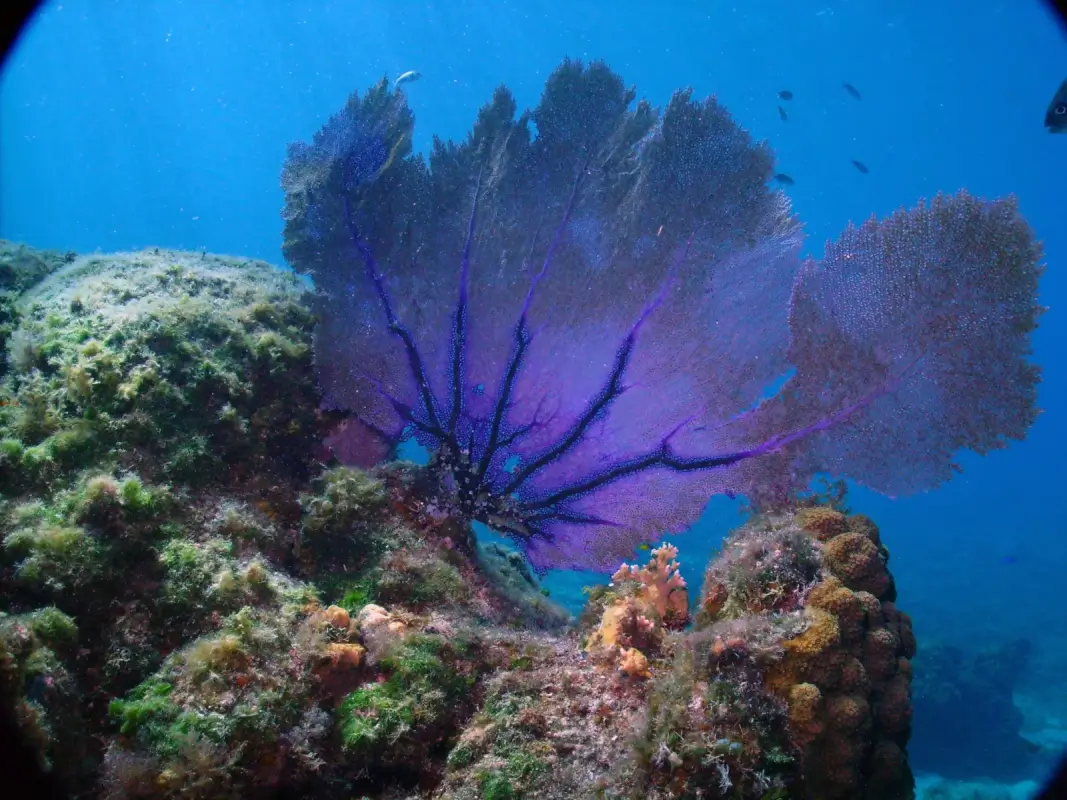
• Description: Known for its striking purple coloration and broad, net-like branches.
• Habitat: Typically found in shallow reef environments with moderate to strong water flow.
2. Yellow Sea Fan
(Muricea elongata)

• Description: Features vibrant yellow branches with a more bushy and compact structure.
• Habitat: Prefers deeper waters with moderate currents.
3. Orange Tree Gorgonian
(Eunicea calyculata)
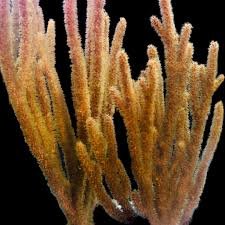
• Description: Characterised by its bright orange colour and tree-like appearance with thicker branches.
• Habitat: Found in both shallow and deep reef areas, often in areas with strong currents.
4. Red Finger Gorgonian
(Diodogorgia nodulifera)
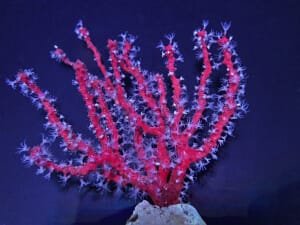
• Description: Exhibits bright red branches with a finger-like structure, often adorned with white polyps.
• Habitat: Inhabits deeper waters, typically in areas with low to moderate light and strong water flow.
Care and Maintenance in Reef Aquariums
Keeping gorgonian sea fans in a reef aquarium can be highly rewarding, but it requires careful attention to their specific needs. Here’s a detailed guide to their care and maintenance:
Tank Setup and Environment:
1. Tank Size:
• Provide a sufficiently large tank to accommodate the size and growth of the gorgonian. A minimum of 50 gallons is recommended for most species.
2. Water Parameters:
• Maintain stable water conditions with temperatures between 72-78°F (22-26°C), salinity levels of 1.023-1.025 specific gravity, and a pH of 8.1-8.4.
• Regular water changes and efficient filtration are crucial to maintain high water quality.
3. Lighting:
• Gorgonians have varying light requirements depending on the species. Some require moderate to high lighting, while others thrive in low light conditions. Use adjustable LED lighting to meet the specific needs of your gorgonian.
4. Water Flow:
• Provide strong, turbulent water flow to ensure proper nutrient delivery and waste removal. Position powerheads and wave makers to create a dynamic flow around the gorgonian.
5. Substrate and Placement:
• Securely attach gorgonians to live rock or other stable structures. Ensure they are positioned to receive adequate water flow and light based on their requirements.
Feeding and Nutrition
1. Diet:
• Gorgonians are filter feeders, capturing plankton and organic particles from the water. Supplement their diet with phytoplankton, zooplankton, and other fine particulate foods.
• Feed small amounts several times a week, ensuring food particles reach the gorgonian’s polyps.
2. Feeding Technique:
• Use a turkey baster or pipette to target feed the gorgonian, especially in areas with strong water flow where food particles may quickly disperse.
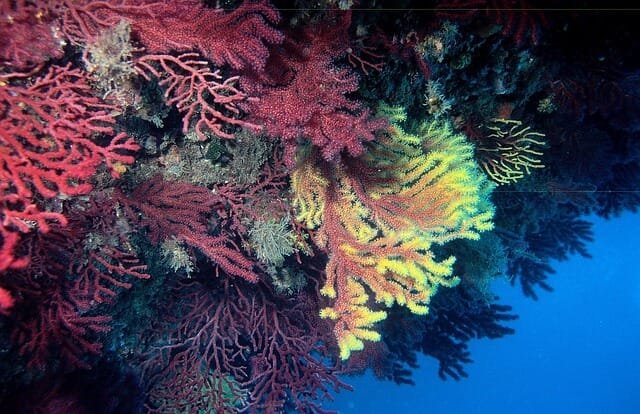
Related Articles:
- The Delicate Art of Keeping Clams in a Reef Aquarium
- A Beginner’s guide to Soft Corals
- Grubs Up, Your Brief Guide To Feeding Corals
- Christmas Tree Worms: The Festive Reef Inhabitants
Compatibility with Other Tank Inhabitants
1. Fish:
• Gorgonians are generally compatible with a variety of reef-safe fish. Avoid housing them with aggressive or large herbivorous fish that may damage their delicate branches.
2. Invertebrates:
• They can coexist with other reef-safe invertebrates, such as shrimp, snails, and non-aggressive crabs. Monitor interactions to ensure harmony in the tank.
3. Corals:
• Gorgonians can be kept with other soft and hard corals, but provide adequate space to prevent competition for light and water flow.
Contribution to Reef Biodiversity
Gorgonian sea fans play a vital role in reef ecosystems, contributing to biodiversity and ecological balance.
Ecological Roles
1. Habitat Formation:
• The complex structures of gorgonians provide shelter and breeding grounds for a variety of marine organisms, including fish, invertebrates, and microorganisms.
2. Nutrient Cycling:
• As filter feeders, gorgonians capture plankton and organic particles from the water column, contributing to nutrient cycling and helping to maintain water quality.
3. Biodiversity Enhancement:
• By adding structural complexity to the reef, gorgonians enhance overall biodiversity, supporting a wider range of species and interactions within the ecosystem.
4. Indicator Species:
• Gorgonians can serve as indicator species for environmental changes. Their health and growth can provide insights into water quality and ecosystem stability.
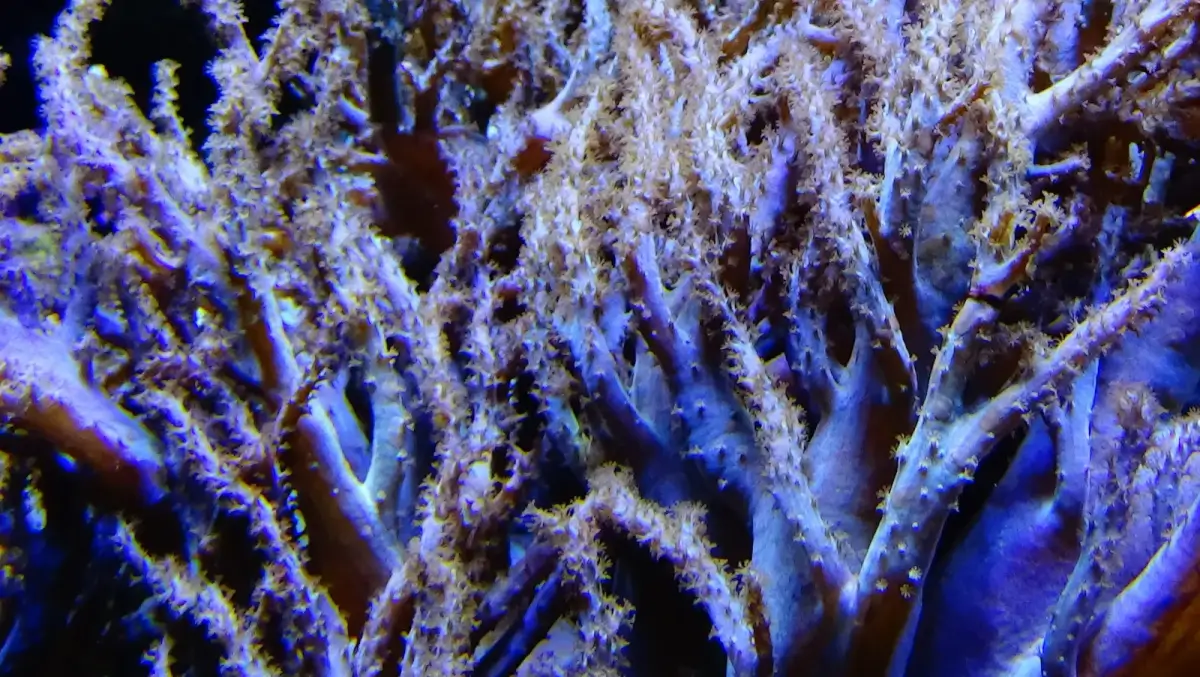
Challenges and Considerations
While gorgonian sea fans offer numerous benefits, there are a few challenges and considerations to keep in mind:
1. Sensitivity to Water Quality:
• Gorgonians are sensitive to changes in water quality and can be negatively affected by poor conditions. Regular monitoring and maintenance are essential to prevent stress and health issues.
2. Feeding Needs:
• Ensuring gorgonians receive adequate nutrition can be challenging, especially in tanks with low natural plankton levels. Consistent supplementation is necessary to meet their dietary requirements.
3. Predation Risk:
• Some fish and invertebrates may nip at or damage gorgonian branches. Provide ample hiding spaces and monitor tank inhabitants to reduce this risk.
4. Algal Overgrowth:
• Algae can overgrow on gorgonian branches, inhibiting their ability to feed and breathe. Maintain proper water flow and light conditions to prevent algal buildup.
Conclusion
Gorgonian sea fans, with their graceful and intricate structures, are a captivating addition to any reef aquarium. Their contributions to habitat formation, nutrient cycling, and biodiversity enhancement highlight their importance in maintaining healthy and balanced reef ecosystems. By understanding their specific needs and providing appropriate care, aquarists can enjoy the beauty and ecological benefits of gorgonian sea fans in their reef tanks. Whether you are an experienced reef keeper or new to the hobby, incorporating gorgonian sea fans into your aquarium can enhance its diversity, resilience, and aesthetic appeal.




